Social Revolution
- Social movements and collective action in France.
- Occurring in the 1980-1990s.
- New forms of social mobilization for a variety of social issue.
- Meant to achieve social and economic goals without relying on existing political structures at the time.
- Focused not only addressing labor needs but key social constructs such as racism and income inequality.
- Collective action with a political stake combined with ideology.
- Generating social change and commitment to politics in order to secure.
- Redefying and reforming political and social structures.
- Tourainian perspective saw this action as society expressing rejection of existing systems.
- These collective action movements saw a change in the nature of society and culture in France as it became politically active.
The latter part of the 20th century saw a significant rise of “new” social movements in France, which not only defied conceptions of relative indifference to politics among the modern French society but shifted methodological and ideological perspectives on social change. These forms of mobilization highlighted the contemporary issues that French society struggles with and gave rise to a dynamic form of citizenship which is evident to modern day.
The social movements of the late 20th century in France have all the markings of a peaceful social revolution. It was a general social expression of contempt and rejection of the status quo, particularly of the political and social systems of governance meant to oversee areas that the population was dissatisfied with. It led to a transformation of certain political and social structures and the manner which society perceives its role in the political institutions guiding social policy.
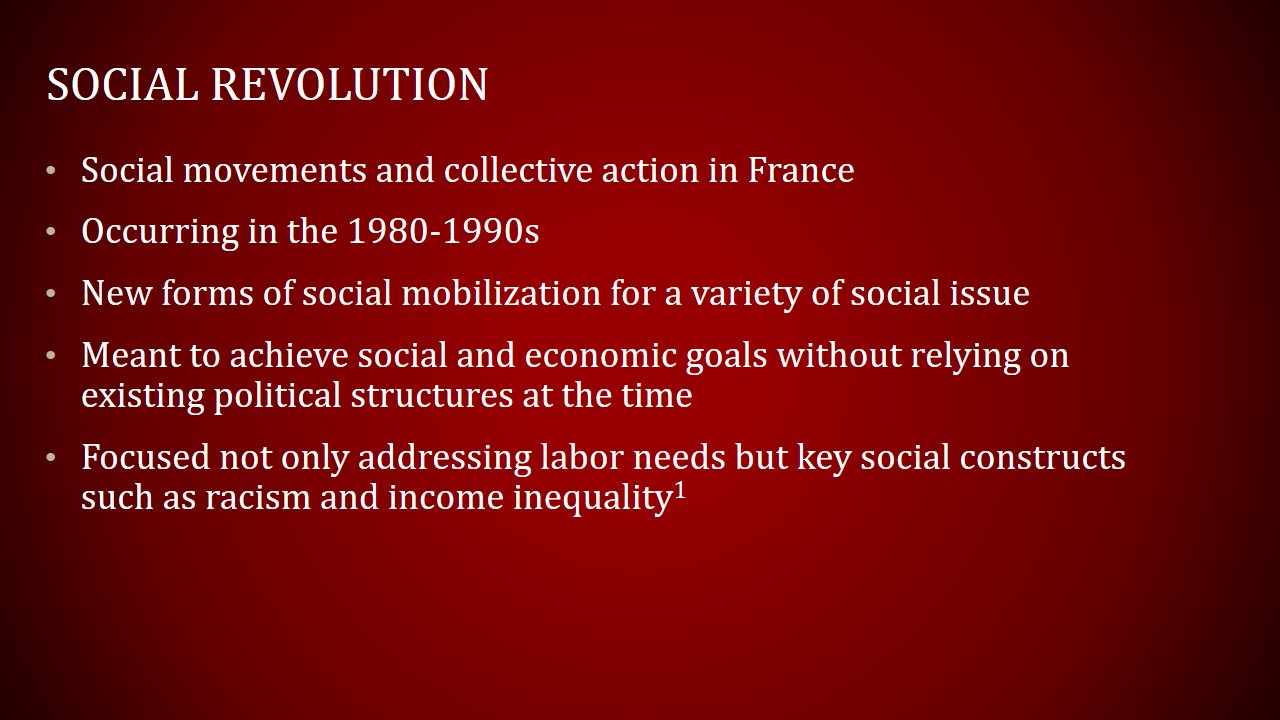
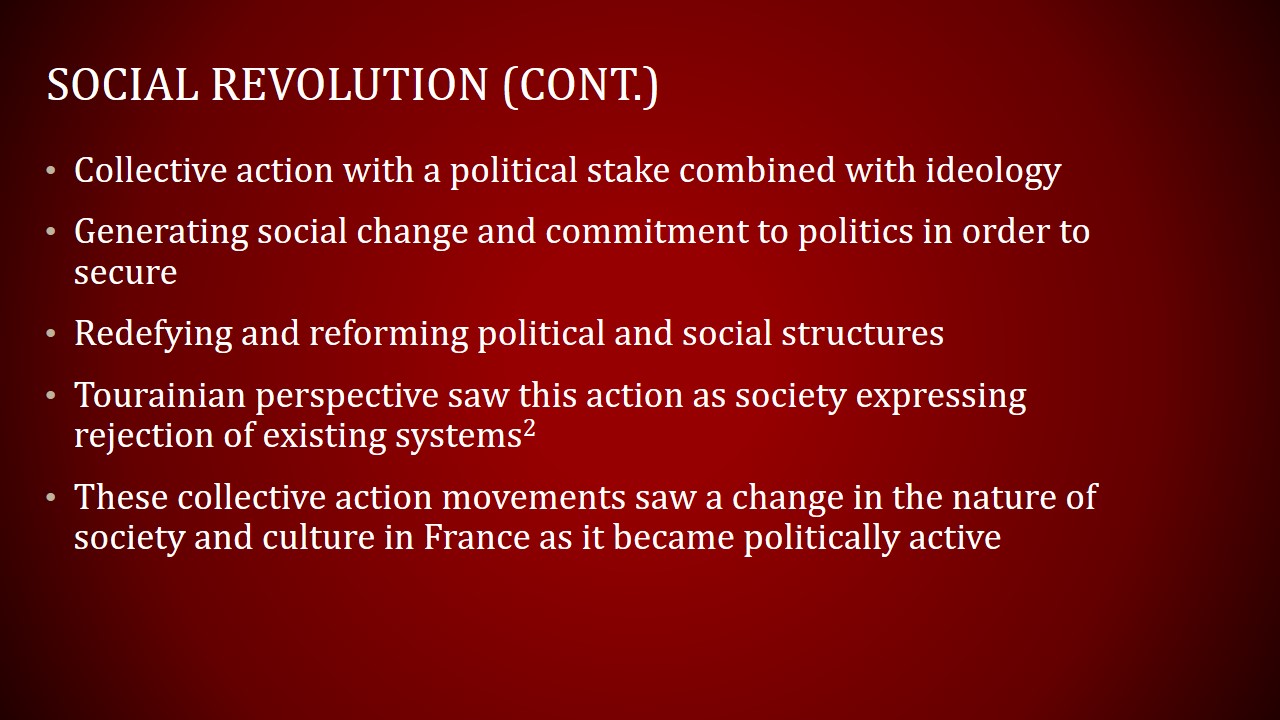
Cultural Revolution
- China’s post-socialist transformation in the 1980-1990s.
- Reforms instituted by Deng led to ideological shift.
- Cultural transformation from Mao’s revolutionary past.
- Led to the capitalist and global economy known today.
- Reform paradigm shifted perspective of socialism.
- Both public perceptions and methods of governance changed.
- Radical transformation of China’s society, economy, and politics.
- Sociopolitical movement which addressed the social roots of discontent.
- Changed the cultural landscape for China’s population.
- Introduction of new ideologies and relaxation of restrictions.
- Reforms presented opportunity for growth and discussion for China’s future and its identity.
Deng Xiaoping became the leader of the People’s Republic of China after the death of the infamous revolutionary Mao Zedong which established Communism in China just a few decades earlier. Deng began a series of socio-economic reforms which were initially meant to revitalize socialism but led to extensive cultural and social changes. The conditions of state repression and ideological appropriation changed to a socialism dogma that is more liberal and focuses on modernization of the country, both economically and socially.
Although the term “cultural revolution” commonly applies to the movement by Mao to bring Communism to China, the events stirred by Deng reforms in the latter 20th century are often referred to as the second revolution in China. It was a rapid shift in ideology which sought to maintain socialism as a form of governance but greatly diverted from the oppression, economic isolation, and cultural protectionism that had been established by Mao.
The socioeconomic changes created by Deng allowed the Chinese numerous freedoms ranging from advocating for better pay to access to Western cultural elements. It was a wholesome cultural revolution in the way of life and social perceptions.
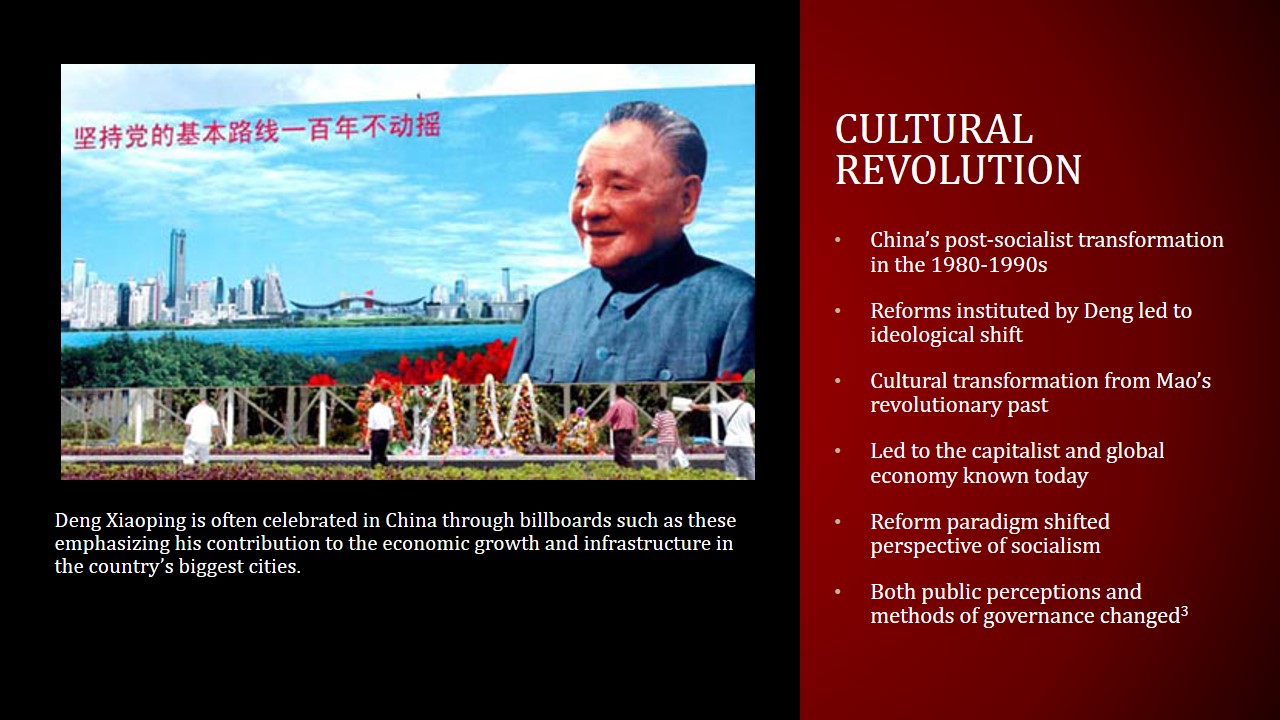
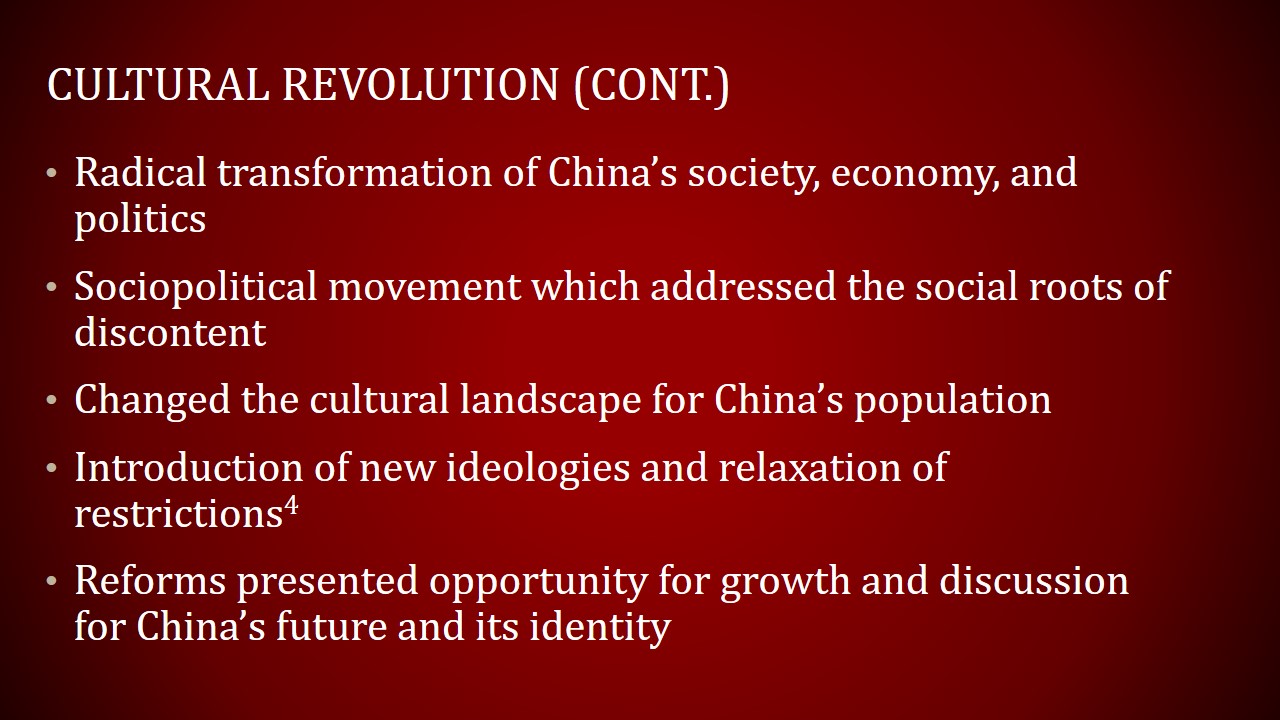
Religious Revolution
- The Islamic Fundamentalism movement.
- Confronts the modern and liberal Islam.
- Prime example: Iranian Revolution (1979), primarily religious than political.
- Established a first modern Islamic republic.
- Religion and state became integrated under clerical leadership.
- Unique as it lacked the common social conditions for a revolution.
- Definition of an Islamic fundamentalist revolution.
- It is a culturally determined political response to an external threat.
- Its outcome was the transformation of domestic politics.
- Achieved through religious means and extreme forms of fundamentalism.
- Transformed the religious, social, and political status quo in the country and region.
Islamic Fundamentalism is based on the premise that society should function under highly conservative Sharia Law. Leading up to 1979, Iran was ruled by an authoritarian monarch Reza Shah who was increasingly pro-Western and supported secular Islam. Although political reasons were involved as well, the fundamentalist Islam groups cooperated to overthrow the government and religious leadership to establish an Islamic republic state ruled by a religious figure Ayatollah Ruhollah Khomeini. It was a swift, nonviolent, and non-traditional revolution, but created significant changes in Iran, not only religiously but reflected upon civil law.
The Iranian Revolution came about due to the public perception that the Shah government was an instrument of foreign intervention from the United States, both politically and socially. From an Islamic standpoint this was seen as moral corruption, incompatible with the religious beliefs of Islam. Combined with nationalistic movements, the revolution occurred based on Islamic fundamentalist structure which is an effective cultural response at a political level to eliminate this external influence. As a result, this led to the rise of a religiously centered and highly conservative leadership and social order.
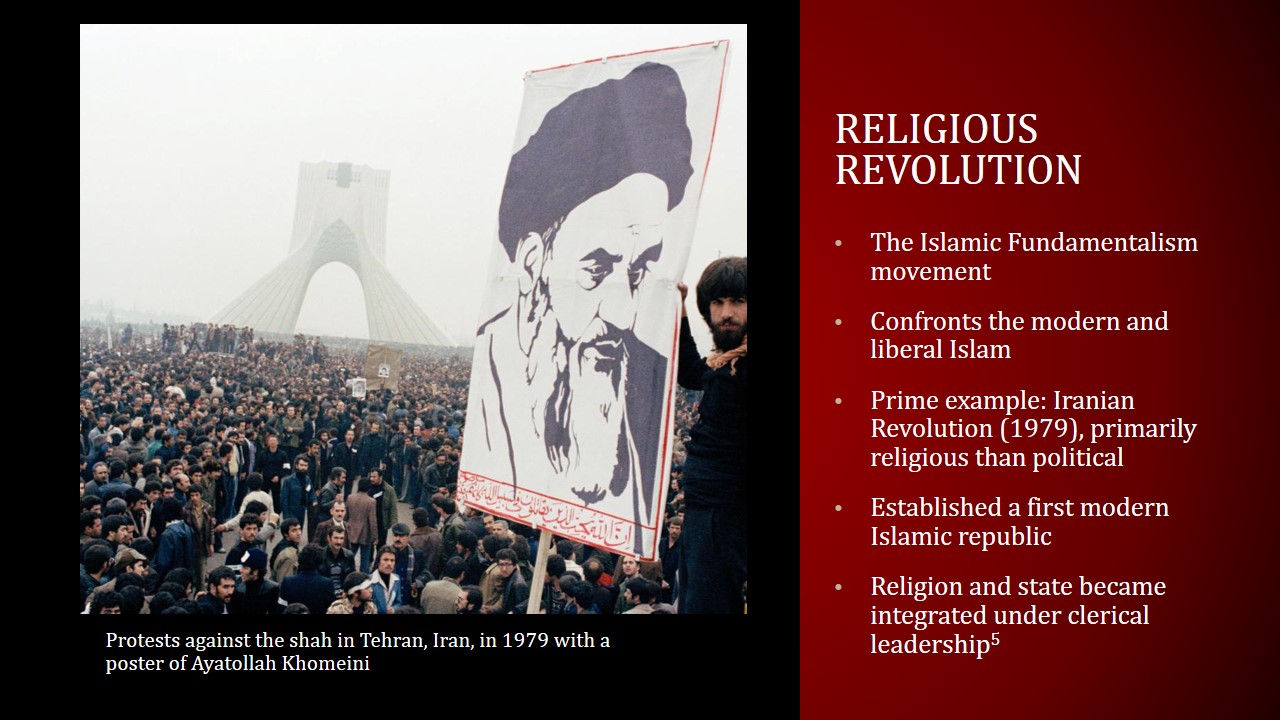
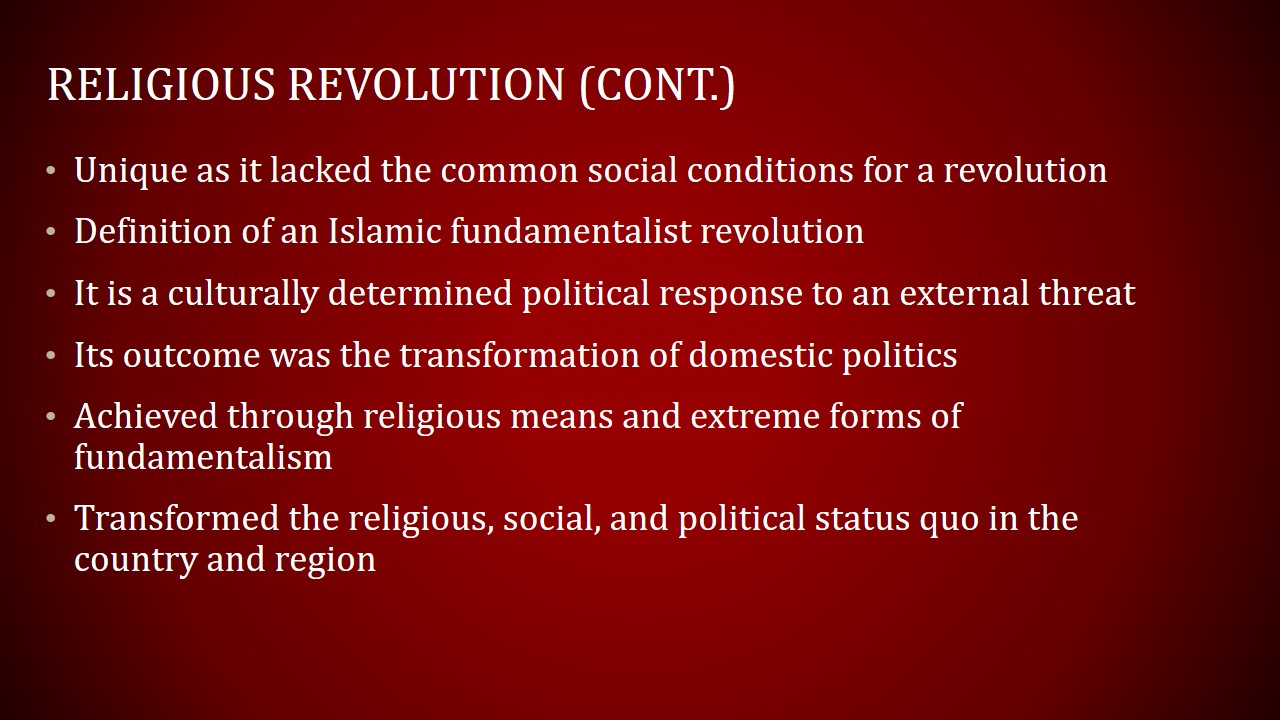
Conclusion
- All three revolutions generally saw significant socio-political change.
- Revolutionary “action” was generated or influenced by the populations.
- Some political factor or leadership was involved.
- Systemic change occurred but differed on a top-down or bottom-up approach depending on the conditions.
- Outcomes of revolutions were successful.
- The revolutions described were largely non-violent.
- Outcomes resulted in a peaceful transition.
- Changing the status quo and nature of societal function.
- A reflection of population dynamics and political activism.
- Instigated by dissatisfaction of the population that resulted in transitional changes.
Although the three revolutions discussed in this presentation are inherently differing in their nature and structure, they share many similarities including their intention to create meaningful socio-political change in the context of their unique conditions. The revolutions differ in their origins as one was a social movement, the other was driven by religious groups, and the other was actually instigated by the government itself. However, outcomes of generating systemic change was commonplace among all of them as the actions sought to resolve the unique issues facing each society.
Among these three types of revolutions, all of them were relative non-violent in their process and outcomes, which is vastly juxtaposed with the bloody political revolutions of the early 20th century. It was a peaceful transitional change of the status quo either in society, culture, or governing religion. This can be attributed to the fact that the revolutions were a reflection of population dynamics and increase political activism among populations that ensured a bottom-up approach to generating and accepting the outcomes of these swift and radical changes to the various political and social systemic factors.
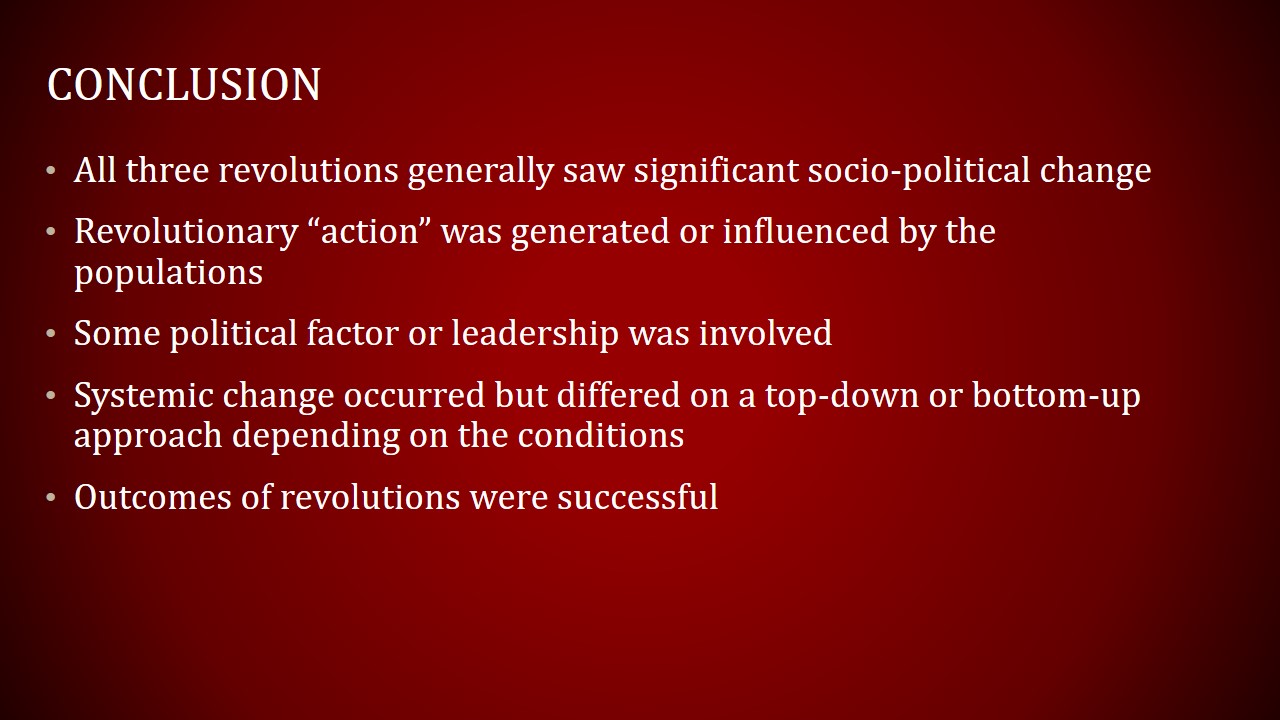
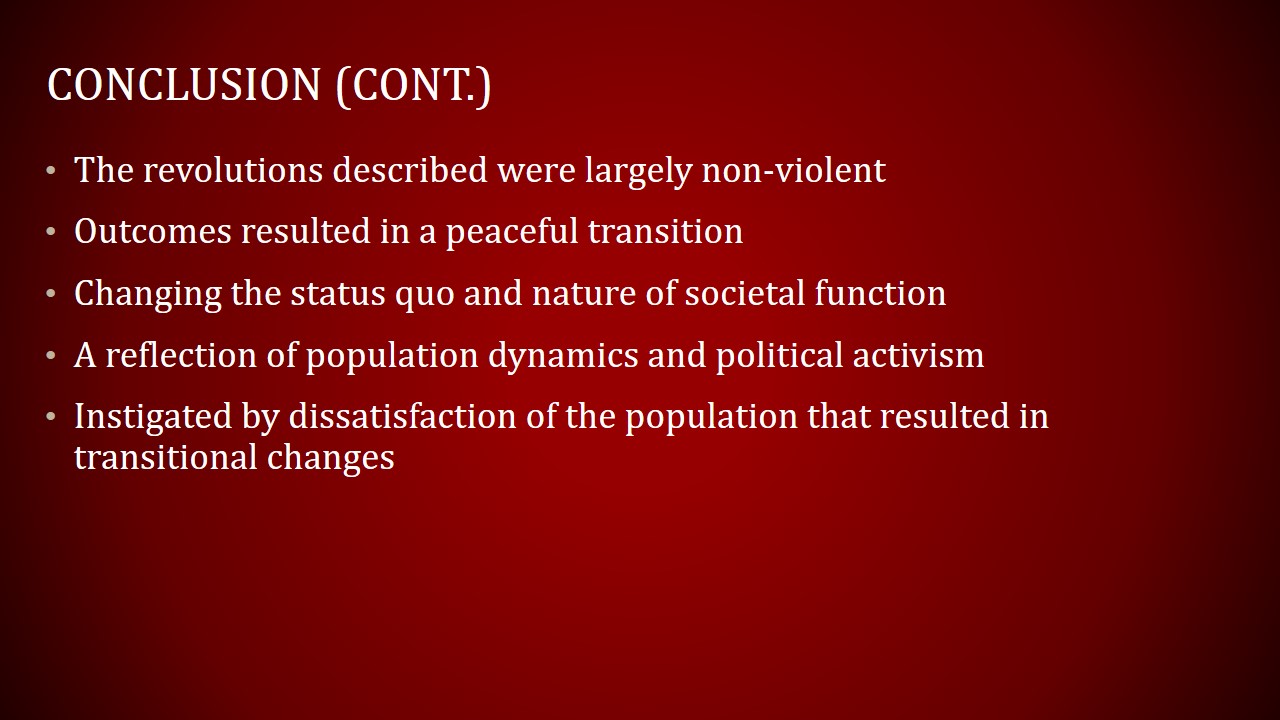
Bibliography
Bell, Laurence. “Interpreting Collective Action: Methodology and Ideology in the Analysis of Social Movements in France.” Modern & Contemporary France 9, no. 2 (2001): 183–196.
DeFronzo, James. Revolutions and Revolutionary Movements. Boulder: Westview Press, 2015.
Goldstone, Jack A. Revolutions: Theoretical, Comparative, and Historical Studies. Belmont: Wadsworth, 2008.
Waters, Sarah. “New Social Movements in France: Une Nouvelle Vague Citoyenne?” Modern & Contemporary France 6, no. 4 (1998): 493–504.
Wu, Yiching. “Coping with Crisis in the Wake of the Cultural Revolution: Rehistoricising Chinese Postsocialism.” Historical Materialism 21, no. 4 (2013): 145–176.